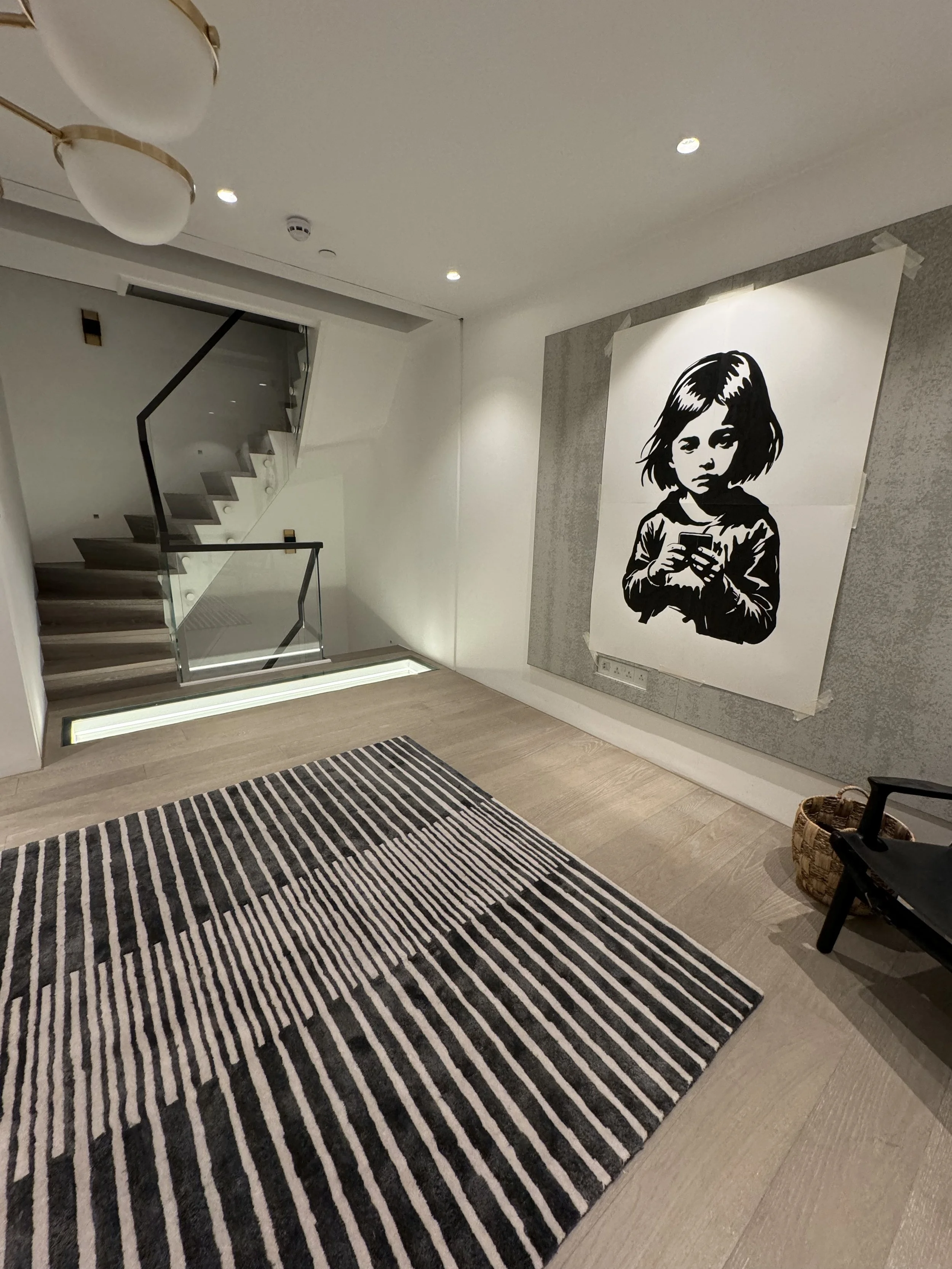Else
Acrylic based ink on paper
Executed 3 July 2024, London
With Else, Miguel Fernández reaches one of the most haunting and formally resolved moments of his artistic journey. The image of a young girl, drawn in inky chiaroscuro against the stark whiteness of the paper, appears almost to hover between presence and disappearance. Her hands cradle a small device; her eyes, formally for the first time in Fernández’s practice, meet ours directly. That unguarded gaze, still, vacant, and immeasurably distant, pierces the viewer with the quiet horror of recognition. She is here, but not here. The body remains; the mind is elsewhere.
The title, Else, encapsulates this condition of displacement. It denotes “otherness,” “difference,” “beyond.” In the context of Fernández’s mission, it becomes a philosophical and emotional cipher for the psychic exile of a generation raised under the algorithmic spell of the screen. The child before us is not portrayed as villain or victim but as apparition: a being fragmented by the very devices that promise connection. Her stillness is deceptive; a stillness born of saturation, of inner noise so constant it erases the self.
The work’s material construction is essential to its meaning. As with the preliminary study for Swing of Silence, the image is drawn across four sheets of paper joined to form a larger surface. This fragile assembly becomes a metaphor for psychological fracture: the child’s identity, like the paper that holds her, is pieced together, visibly seamed, always at risk of separation. What appears whole is, in truth, precarious. The fissures that run through the composition are not imperfections; they are the work’s moral architecture. They speak of a soul broken by exposure, held together only for appearance’s sake, a façade masking the quiet ruin within.Maybe you want to launch a business. Maybe you want to turn a hobby into something more. Or maybe you have a creative project to share with the world. Whatever it is, the way you tell your story online can make all the difference.
Formally, Else refines Fernández’s graphic vocabulary to its purest expression. Heavy blacks articulate volume without detail; light functions not as illumination but as erasure, the space where meaning has been drained away. Every contour feels deliberate, sculpted by absence as much as by ink. The girl’s face, rendered with monumental simplicity, conveys the pathos of classical portraiture, yet her subject is unmistakably contemporary, her tragedy unmistakably digital.
The decision to deliberately leave her eyes uncovered adds another variance in Fernández’s visual language. In other works, coloured veils across children’s eyes symbolize blindness to the world around them. Here, the removal of that cover does not signify liberation but a more profound captivity. Her uncovered eyes confront the viewer, yet behind them lies a void; she has seen too much, absorbed too much, until seeing itself has become impossible. The look she returns is not accusatory, it is vacant, infinite and unbearably human.
Significance
Else stands among the most emotionally charged works of Miguel Fernández. It embodies his transformation from observer to chronicler of a collective condition, distilling his mission, to expose the psychological cost of screen dependency, into an image of universal resonance. By uniting technical precision, poetic symbolism, and existential urgency, Else transcends the boundaries of social critique to become a meditation on being itself: what remains of presence when attention has been outsourced, what becomes of identity when consciousness is elsewhere.
Few images of the digital age capture its paradox with such devastating economy. In Else, Fernández offers no moral lesson, only a mirror, one in which we see the reflection of a generation both illuminated and lost in its own glow.



